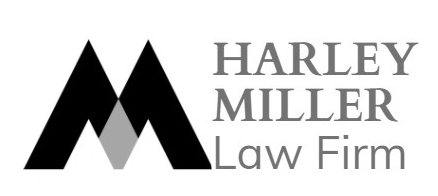When engaging in mergers and acquisitions (M&A) processes, it is crucial for the parties involved to adhere to specific guidelines and procedures. This is particularly important to ensure a smooth and successful transaction while complying with regulatory requirements. In this second part of our guidelines on M&A, we will explore key steps that parties should consider during the procedures. By following these M&A guidelines, parties can optimize their chances of achieving a favorable outcome and mitigate potential risks along the way.

Covered transactions
The merger control regime in Vietnam encompasses a range of M&A transactions, such as mergers, consolidations, asset and share acquisitions, and incorporated joint ventures. In most cases, notifications and competition scrutiny are necessary for asset and share acquisitions only if they lead to the acquirer attaining “control” over the target entity. Control is defined as the acquisition of 50% or more ownership of the target’s voting shares or assets, or the gain of decision-making authority, such as the power to appoint key managers or modify the target’s charter.
Nevertheless, it is worth highlighting that there are additional situations where a change of control may occur, and the regulatory framework in Vietnam concerning this matter can be unclear.
Notification Thresholds
However, it is important to emphasize that there are other instances in which a change of control may occur, and the regulatory landscape in Vietnam regarding this matter can be ambiguous.
| Industry | Turnover (Group-wide basis, for a single party) | Assets (Group-wide basis, for a single party) | Transaction Value (Not applicable to foreign-to-foreign transactions) | Combined Market Shares |
| Insurance | VND 10 trillion (USD 435 million) | VND 15 trillion (USD 652 million) | VND 3 trillion (USD 130 million) | 20% |
| Securities | VND 3 trillion (USD 130 million) | VND 15 trillion (USD 652 million) | VND 3 trillion (USD 130 million) | 20% |
| Banking | 20% of total turnover of Vietnam-based credit institutions | 20% of total assets of Vietnam-based credit institutions | 20% of total charter of Vietnam-based credit institutions | 20% |
| Others | VND 3 trillion (USD 130 million) | VND 3 trillion (USD 130 million) | VND 1 trillion (USD 43.48 million) | 20% |
After a transaction has obtained clearance from the competition authority, either through a decision or the expiration of a specified period of time, it becomes immune to further challenges. However, if a transaction goes unreported and subsequently leads to a significant reduction in competition, it may still be susceptible to future challenges.
Review Process
In Vietnam, the merger review process comprises two phases: the preliminary appraisal and the official appraisal. The substantive analysis in merger reviews begins by defining the market, then proceeds to evaluate potential anticompetitive effects while taking into account any countervailing factors. Even if a merger initially appears to have anticompetitive effects, it may still receive approval if it produces a “positive impact” that outweighs the negative consequences for the market or the overall economy.

a. Preliminary Appraisal
In this phase, the competition authority performs the following tasks:
• Identifying the parties participating in the transaction and investigating their relationships.
• Determining the specific type of transaction, such as mergers, acquisitions, or joint ventures.
• Assessing the impacted market(s).
• Calculating and validating the combined market share of the involved parties within the relevant market.
• Evaluating and confirming the level of concentration in the relevant market both before and after the proposed transaction.
a.1. Determining the Relevant Market
The market definition serves two main purposes. First, it helps identify the relevant product and geographic markets in order to address competitive concerns. Second, it aids in pinpointing the participants in the market and calculating their market shares and concentration.
According to Vietnamese law, the relevant product market is defined as a market consisting of goods and services that are interchangeable in terms of their characteristics, use purpose, and price. The law assumes that two products are interchangeable in price when the price difference between them is no more than 5%, assuming all other factors remain equal. However, if the price difference exceeds the 5% threshold or if deemed necessary by the competition authority, a modified version of the Small but Significant Non-transitory Increase in Price (SSNIP) test, called the “localized” version, may be used to determine the price interchangeability of the products in question. Interchangeability is assessed based on various factors, including physical attributes, composition, properties, technical features, and unique product properties. Additionally, factors such as cross-elasticity of demand and supply substitution may also be taken into consideration.
When determining the relevant geographic market, the “localized” SSNIP test is not used. Instead, a specific geographical area is deemed relevant if it demonstrates “similar competitive conditions” and is notably distinct from neighboring areas. Various factors are taken into account to determine these criteria, including transportation costs and time, as well as the presence of barriers to market entry and expansion. Barriers to market entry and expansion encompass a range of factors such as regulatory barriers, financial obstacles, sunk costs, access to supply sources and infrastructure, consumer habits, business practices, the exercise of intellectual property rights, and other types of impediments.
a.2 Calculating Market Share
Depending on the specific attributes and dynamics of the market in question, market shares can be determined by either examining revenue or unit sales. Historical data over different periods such as monthly, quarterly, or yearly can all be taken into account for this purpose.
a.3 Assessing Market Concentration
In evaluating market concentration, the competition authority in Vietnam takes into account two factors: (1) the level of market concentration after a merger and (2) the change in concentration caused by the transaction. The commonly used measure for market concentration is the Herfindahl-Hirschman Index (HHI), which is derived by summing the squares of individual firms’ market shares. Additionally, the increase in HHI (referred to as delta) can be determined by doubling the product of the merging firms’ market shares.

a.4 Indentifying Safe Harbors
The safe harbor thresholds provided in the table below determine whether a transaction, after being properly notified to the competition agency, can proceed without requiring a detailed examination in the form of a “second phase” scrutiny. These thresholds are based on specific quantitative criteria such as the combined market share, post-merger concentration level, and the impact on concentration caused by the transaction.
b. Official Appraisal
In this phase, the competition authority undertakes a thorough examination of the proposed transaction to assess its potential consequences on competition and the economy. The authority will:
• Scrutinize the potential negative effects of the transaction in terms of limiting competition significantly;
• Evaluate proposed solutions or remedies that aim to mitigate any potential anticompetitive effects arising from the transaction;
• Assess the favorable economic impacts resulting from the transaction;
• Examine measures that can further enhance the positive effects of the transaction;
• Review any relevant conditions associated with the transaction; and
• Conduct an overall evaluation of the potential anticompetitive effects and positive impacts of the transaction.
b.1 The Substantial Lessening of Competition (SLC) Test
Moreover, the competition authority will deem a transaction in the Vietnamese market prohibited if it determined to likely result in significant anticompetitive effects. Moreover, the competition authority carefully evaluates the potential impact of such transactions to ensure fair competition. To assess the potential impact, the competition authority takes into account several factors, including the combined market share of the merging parties before and after the merger, concentration levels to evaluate the threat of increased market power or collusion, the merging parties’ relationship in the M&A production and supply chain to assess exclusionary effects, competitive advantages gained through the transaction, and the ability of the post-merger firm to increase prices or prevent entry by other firms.
Furthermore, the competition authority also takes into account other specific factors in the relevant industry or sector. The competition authority considers these factors along with any proposed remedies to address anticompetitive effects and allows merging parties to present defenses. Vietnamese law also takes into account the transaction’s positive impact on the economy, such as industry and technological development, opportunities for small and medium-sized enterprises, and enhancing the competitiveness of Vietnamese enterprises in the international market. However, since most factors are qualitative in nature, the competition authority has broad discretion in the decision-making process. The official evaluation of the transaction can result in one of three possible outcomes: unconditional clearance, conditional clearance, or prohibition.

Conclusion
To conclude, imperative for parties engaged in mergers and acquisitions to adhere to the guidelines and procedures outlined in this second part. Additionally, doing so is of utmost importance in ensuring a smooth and successful M&A process. By following these steps, parties can navigate the complex M&A landscape with confidence, ensuring compliance with regulations and maximizing the chances of a successful transaction. From conducting thorough due diligence to preparing comprehensive filing documentation and maintaining open communication with regulatory authorities, these M&A guidelines provide a roadmap for parties to achieve their desired outcomes. With careful planning, strategic decision-making, and a commitment to compliance, parties can embark on M&A procedures with greater assurance and increase their chances of a smooth and successful transaction.
HMLF is always available to offer assistance in understanding the procedures with authorities.

Harley Miller Law Firm “HMLF”
Head office: 14th floor, HM Town building, 412 Nguyen Thi Minh Khai, Ward 05, District 3, Ho Chi Minh City.
Phone number: +84 937215585
Website: hmlf.vn Email: miller@hmlf.vn





